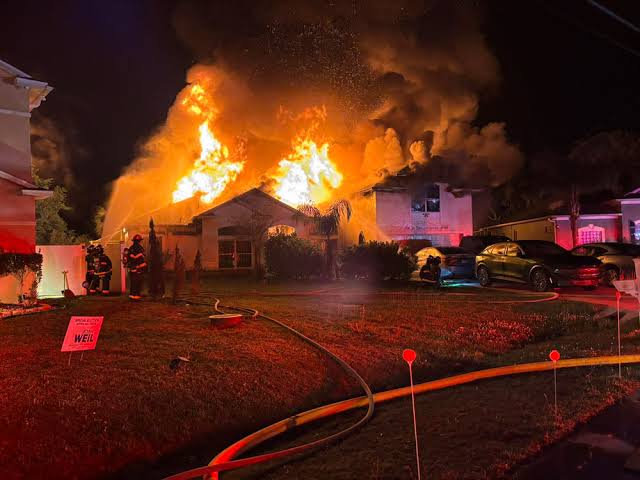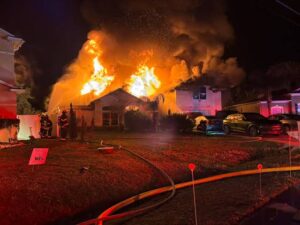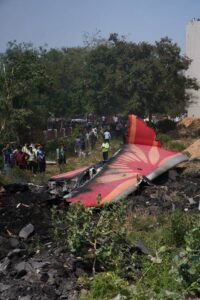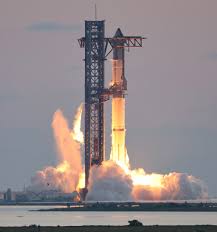BOOMSHELL ANNOUNCEMENT: Just now Airplane Crashed In The Yellowstone National Park Due To…… Detectors…
Boomshell Announcement: Airplane Crashes in Yellowstone National Park Due to Faulty Detectors
In a shocking and unexpected turn of events, an airplane crashed today in the heart of Yellowstone National Park, one of the most iconic natural preserves in the United States. The crash has left authorities scrambling for answers, with investigators now pointing to an alarming failure in the aircraft’s detection systems as the primary cause of the devastating accident.
The aircraft, identified as a commercial flight en route from Denver to Seattle, was reportedly flying over the national park when it lost communication with air traffic control. Moments later, a distress call was made by the pilot before the plane’s sudden descent into the rugged terrain of Yellowstone. Emergency response teams, including the National Park Service, local authorities, and federal agencies, quickly mobilized to the crash site, located near the park’s western border.
While the cause of the crash remains under investigation, initial reports from officials suggest that faulty detectors on board may have been a significant factor in the incident. These detectors, which are a crucial part of modern aircraft systems, are designed to alert pilots to various safety risks, including mechanical failures, altitude fluctuations, and potential collisions with other objects in the air. However, investigators have found that several key systems failed to function properly during the flight, contributing to the tragic outcome.
The Role of Detection Systems in Modern Aviation
Aircraft detection systems are sophisticated technologies designed to prevent accidents by providing pilots with real-time data on the status of various aircraft systems and the surrounding environment. These systems include:
1. Weather Detection Systems: These allow pilots to monitor weather conditions in real-time, alerting them to potential hazards such as storms, turbulence, or lightning.
2. Collision Avoidance Systems: Using radar and sensors, these systems detect potential collisions with other aircraft or obstacles in the flight path.
3. Engine Monitoring Systems: These sensors track the performance of an aircraft’s engines, ensuring that everything is functioning normally and that the pilot is alerted to any issues.
4. Altitude Warning Systems: These systems track the aircraft’s altitude and provide warnings in case the plane is descending too rapidly or approaching a dangerous altitude.
On the ill-fated flight, it seems that a critical malfunction occurred within one or more of these detectors, causing them to fail in relaying vital information to the pilot. Experts suggest that the pilot may not have received the necessary alerts about the plane’s rapidly declining altitude, which ultimately led to the crash.
A Close Call with Yellowstone’s Geological Hazards
Yellowstone National Park is famous not only for its stunning beauty but also for its unpredictable geological features. The park sits atop a volcanic hotspot, with geothermal activity, including hot springs, geysers, and potential volcanic risks. The rugged terrain and dense forests make the region particularly difficult for emergency responders to access, further complicating the efforts to locate the crash site and rescue any survivors.
According to witnesses in the area, a loud explosion was heard shortly before the plane’s descent, followed by a column of smoke rising from the park’s densely wooded interior. While the explosion was likely the result of the crash itself, it also underscores the severity of the situation. The national park’s unpredictable environment poses unique challenges for first responders, who must navigate treacherous terrain in order to reach the wreckage and assist any potential survivors.
The Impact of Technological Malfunctions on Aviation Safety
The crash in Yellowstone raises important questions about the reliability of the technologies that modern aviation has come to rely on for safety. Despite significant advancements in aircraft detection systems, the malfunctioning of these systems on today’s flight highlights a vulnerability that many in the aviation industry may have overlooked.
Dr. Julia Evans, a leading expert in aviation technology, expressed her concerns about the failure of detection systems on the flight. “Modern aircraft are equipped with multiple layers of safety systems, but even the smallest malfunction in a critical component can have catastrophic consequences,” Dr. Evans said. “This incident serves as a stark reminder that while technology can enhance safety, it cannot guarantee perfection. We need to ensure that these systems are constantly tested and improved to keep up with the evolving demands of aviation.”
Following the crash, the National Transportation Safety Board (NTSB) launched a full investigation to determine the exact cause of the malfunction and how it may have contributed to the crash. Investigators are also expected to review the aircraft’s maintenance records and flight data to identify any other potential issues that could have led to the failure of the detection systems.
A Community in Shock
As news of the crash spread, the surrounding communities in Montana and Wyoming were left in a state of shock. Families and friends of the passengers and crew aboard the flight have been anxiously awaiting updates, hoping for any signs of life from the wreckage. Local authorities have set up a crisis center to assist with identifying the victims and providing support to their loved ones during this difficult time.
“We are devastated by the news of this tragedy,” said Sara Henderson, a spokesperson for the National Park Service. “Our hearts go out to the families of the victims, and we are doing everything we can to support the investigation and the recovery efforts.”
Meanwhile, the Federal Aviation Administration (FAA) is working closely with the NTSB and other agencies to review the events leading up to the crash. The FAA is also conducting a broader assessment of aircraft safety systems to ensure that similar malfunctions do not occur in the future.
Conclusion: A Wake-Up Call for Aviation Safety
The crash in Yellowstone National Park is a grim reminder of the inherent risks involved in modern aviation, even with the advanced technology designed to keep passengers safe. While the investigation into the exact cause of the crash continues, it is clear that faulty detection systems played a central role in the disaster.
As the aviation industry grapples with the implications of this tragic event, it is expected that significant changes will be made to safety protocols and the design of aircraft detection systems. The hope is that future accidents can be prevented by addressing the weaknesses exposed by this incident, ensuring that air travel remains one of the safest modes of transportation in the world.
The Yellowstone crash is not just a tragedy for the victims and their families; it is a wake-up call for the aviation industry, regulators, and technology developers to prioritize safety above all else. As the investigation unfolds, one thing is clear: the stakes in modern aviation have never been higher, and the push for innovation and reliability in safety technology will only
intensify in the wake of this heartbreaking disaster.












Post Comment